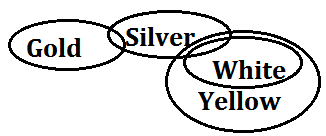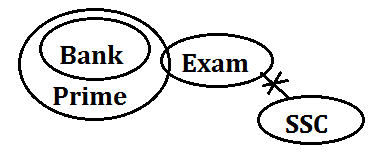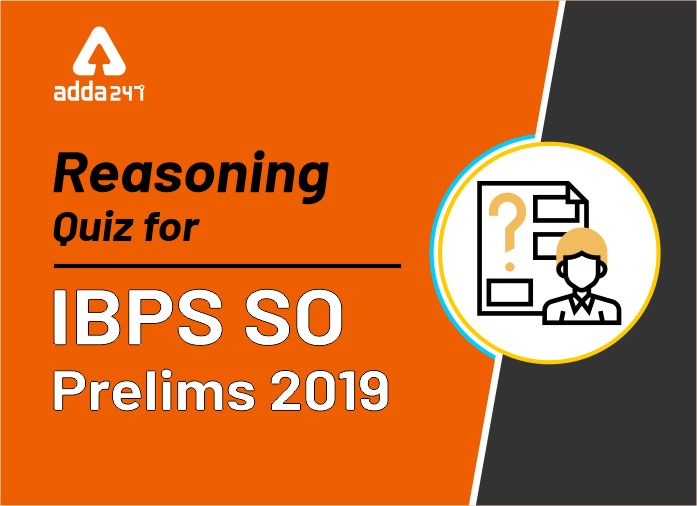Reasoning Ability is an onerous section. With the increasing complexity of questions, it becomes hard for one to give it the cold shoulder. And, to let you practice with the best of the latest pattern questions we will provide a proper study Plan for IBPS SO 2019 exam. Bankeradda also provides daily quizzes of Reasoning Ability for practice as the IBPS SO Prelims is scheduled for 28th and 29th December 2019. So practice to sail through IBPS SO Exam
Directions (1-5): Study the following information carefully and answer the given questions:
Seven persons are sitting in a row, in such a way some are facing north while some are facing south. Each of them has different number of balloons- 9, 15, 25, 31, 36, 53 and 64 (but not necessary in the same order). P sits third to the right of M, who has number of balloons which is a prime number. Only one person sits between P and the one who have five balloons more than M. R sits third to the left of S, who is not an immediate neighbour of M. P does not sit at any ends and have more balloons than M and N. No one sits left of the one who has 31 balloons. The one who has 11 balloons less than P sits second to the right of S. R have less balloon than S and M. Q have number of balloons which is a prime number and sits fourth to the right of O. The one who have third lowest number of balloons facing north. R and S are facing opposite directions. O has 6 balloons less than R. P and Q are facing opposite direction of N. N face opposite direction of S.
Q1. Who among the following have lowest number of balloons?
(a) P
(b) R
(c) S
(d) O
(e) None of these
Q2. How many persons sit between M and the one who have third highest number of balloons?
(a) Two
(b) One
(c) Three
(d) More than three
(e) None
Q3. Who among the following sits second to the right of N?
(a) R
(b) Q
(c) P
(d) S
(e) None of these
Q4. What is the difference between number of balloons between M and S?
(a) 15
(b) 6
(c) 10
(d) 11
(e) None of these
Q5. Who among the following person sits second to the right of the one who have minimum number of balloons?
(a) Q
(b) M
(c) N
(d) P
(e) None of these
Directions (6-10): In these questions, relationship between different elements is shown in the statements. These statements are followed by two conclusions.
Mark answer as
(a) If only conclusion I follows.
(b) If only conclusion II follows.
(c) If either conclusion I or II follows.
(d) If neither conclusion I nor II follows.
(e) If both conclusions I and II follow.
Q6. Statements: P ≤ Q, S ≥ T < M < P
Conclusions: I. T < Q II. Q > S
Q7. Statements: M<O, K ≥ M > F ≤ W < Q
Conclusions: I. O > K II. F ≥ O
Q8. Statements: U > T > M > X= S, T ≥ Z>N
Conclusions: I. N >X II. N < U
Q9. Statements: S ≥ Y > Q, Z < Q, X < Y ≥ P
Conclusions: I. X > Z II. P ≤ S
Q10. Statements: O ≥ J < Y = Z > I > R
Conclusions: I. O ≥ I II. O < I
Directions (11-12): In each question below is given a statement followed by three assumptions numbered I, II and III. You have to consider the statement and the following assumptions, decide which of the statement and choose your answer accordingly.
Q11. Statement: Use ‘X’ brand shoes. These are durable and available in all sizes-An advertisement in the newspaper A.
Assumptions:
I. Normally people like durable shoes.
II. Very few people read advertisement in a newspaper.
III. Very few people read the newspaper A.
(a) None is implicit
(b) Only I and II are implicit
(c) Only I, and either II or III are implicit
(d) All are implicit
(e) None of the above
Q12. Statement: These apples are too cheap to be good.
Assumptions:
I. When the apple crop is abundant, the prices go down.
II. The lower the selling price, the inferior is the quality of the commodity.
III. Very cheap apples are also good.
(a) None is implicit
(b) Only I and III are implicit
(c) Only II is implicit
(d) Only II and III are implicit
(e) All are implicit
Directions (13-15): In each question below are given some statements followed by some conclusions. You have to take the given statements to be true even if they seem to be at variance with commonly known facts and then decide which of the given conclusions logically follows from the given statements, disregarding commonly known facts. Give answer
(a) If only conclusion I follows.
(b) If only conclusion II follows.
(c) If either conclusion I or II follows.
(d) If neither conclusion I nor II follows.
(e) If both conclusions I and II follow.
Q13. Statements: Only a few Gold are Silver.
Some Silver is White.
All White is Yellow.
Conclusions: I. All Yellow being Silver is a possibility.
II. All Gold is silver is a possibility.
Q14. Statements: Only Prime is Bank.
Some Prime is Exam.
No Exam is SSC.
Conclusions: I. No SSC is Prime.
II. All SSC is Prime is a possibility.
Q15. Statements: No Blue are Purple.
All Purple is Green.
Only a few Green is White.
Conclusions: I. All Green is White is a possibility.
II. No Blue is White.
Solution:
Sol. (1-5):

S1. Ans.(d)
S2. Ans.(d)
S3. Ans.(c)
S4. Ans.(b)
S5. Ans.(b)
S6. Ans.(a)
Sol. I. T < Q (True) II. Q > S (False)
S7. Ans.(d)
Sol. I. O > K (False) II. F ≥ O (False)
S8. Ans.(b)
Sol. I. N >X (False) II. N < U (True)
S9. Ans.(b)
Sol. I. X > Z (False) II. P ≤ S (True)
S10. Ans.(c)
Sol. I. O ≥ I (False) II. O < I (False)
S11. Ans. (e)
Sol. Any advertisement highlights only the desirable qualities of the product. So, I is implicit. The ‘X’ brand has advertised its product in newspaper A. This implies that a large section of people reads advertisements in newspapers and that news-paper A too has a side circulation. So, neither II nor III is implicit.
S12. Ans.(c)
Sol. It is mentioned that the apples are so cheap that they cannot be good. This means that the prices of good apples are never too low and that very cheap apples are never good. So, neither I nor III is implicit. Assumption II clearly follows from the statement that apples are of inferior quality because they are cheap. So, it is implicit.
S13. Ans.(a)
Sol.

S14. Ans.(b)
Sol.

S15. Ans.(d)
Sol.

If you are preparing for IBPS SO Prelims Exam, then you can also check out a video for Reasoning below:
You may also like to read:





 GA Capsule for SBI Clerk Mains 2025, Dow...
GA Capsule for SBI Clerk Mains 2025, Dow...
 The Hindu Review October 2022: Download ...
The Hindu Review October 2022: Download ...
 ECGC PO Scorecard 2025 Out, Check Marks
ECGC PO Scorecard 2025 Out, Check Marks




